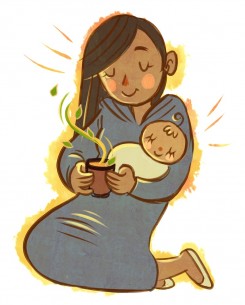Worldwide, a woman dies in childbirth every two minutes. To curb this alarmingly high rate of maternal death , Dr. Levente Diosady has suggested a simple cup of iron-rich tea. Diosady, a U of T professor emeritus in the department of chemical engineering and applied chemistry, believes that iron-rich tea alleviates iron deficiencies, which are the key cause of maternal death — particularly in developing countries. He has won a $250,000 grant to further develop his innovative idea.
The grant was awarded on July 31 by Saving Lives at Birth, an international organization and competition initiated in 2011 that calls for “groundbreaking, scalable solutions to prevent infant and maternal deaths.” Sponsored by the U.S. Agency for International Development, the Norwegian Agency for Development Co-operation, Britain’s Department for International Development, the Bill & Melinda Gates Foundation and the Canadian government-funded Grand Challenges Canada, the competition gave grants to 22 innovators from the 400 entries. Diosady is the only Canadian grantee.
According to the World Health Organization’s estimates iron deficiency causes almost 600,000 perinatal and more than 100,000 maternal deaths each year. It also leads to widespread anemia among young children in the developing world.
The idea of adding iron to tea leaves is not new. However, it has never been implemented due to a biomolecule naturally found in tea leaves: tannin. Tannin reacts with iron to produce a substance that cannot be absorbed by the human body. Diosady’s newly-imagined technology will coat the iron particles to prevent their interaction with tannin until they reach the intestine. The grant will allow Diosady to conduct his two-year project to choose the most suitable coating material that will not only prevent a reaction but also allow the iron and the coating itself to be absorbed in the intestine. The coating will also need to withstand heated water.
Why tea? In an interview with The Varsity, Diosady said that tea is consumed in large quantities even in the developing world, especially in South Asia. This makes tea leaves an ideal vehicle for iron. Furthermore, Diosady’s previous success with a double-fortification of salt with iron and iodine makes modifying tealeaves a “logical step.”
When asked about the future impact of his research, Diosady commented that it could potentially facilitate the microemulsion of other important ingredients, such as vitamins. However, he believes that the microemulsion of iron will have the “biggest health impact and smallest economics impact,” as the cost of the technology, once fully implemented, will be very low.
Finding the ideal coating is not the only challenge, however. In an interviewed with The Globe and Mail, Diosady expressed hope that organizations such as Ottawa-based Micronutrient Initiative will help with selling the idea. He hopes to convince manufacturers in the developing world that the idea is “useful and attractive and economically viable.” Once they buy into the idea, “even the poorest of the poor can absorb this.”
With files from The Globe and Mail and Toronto Star


